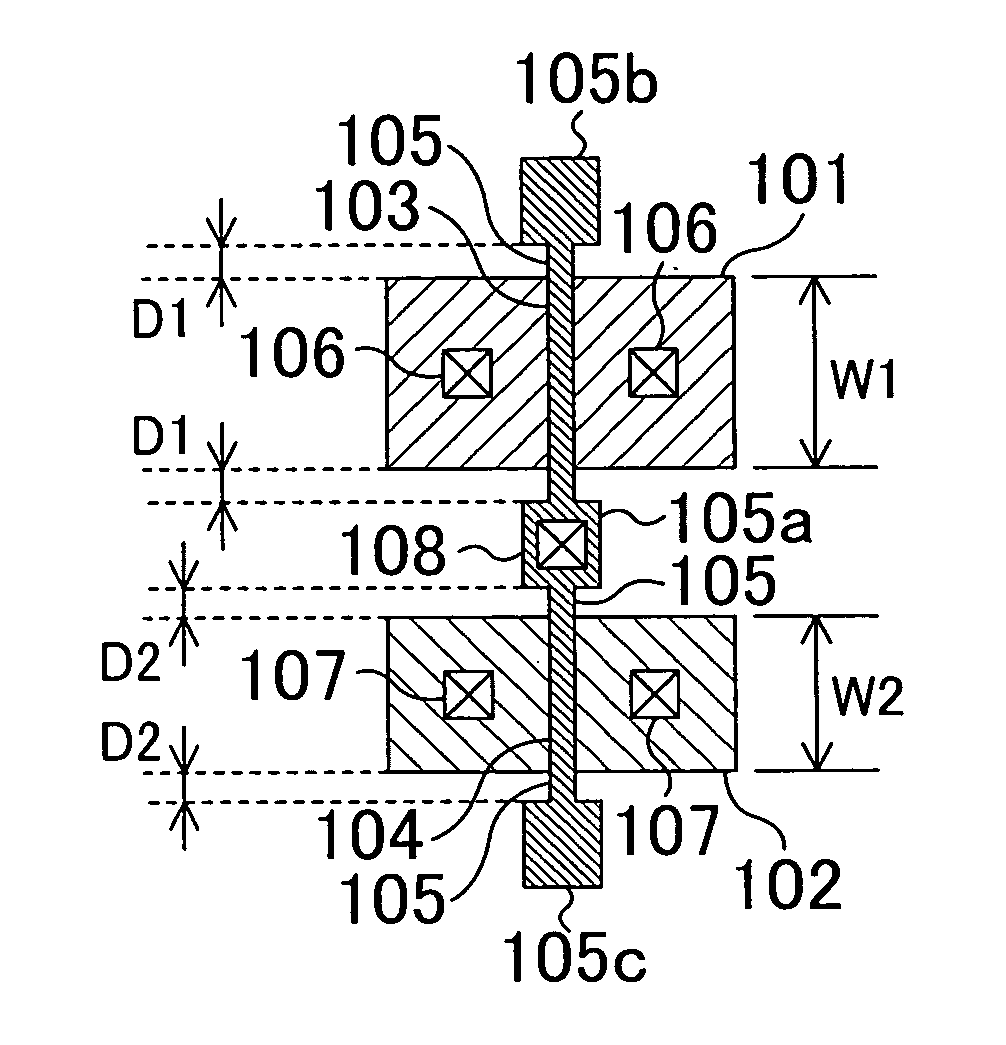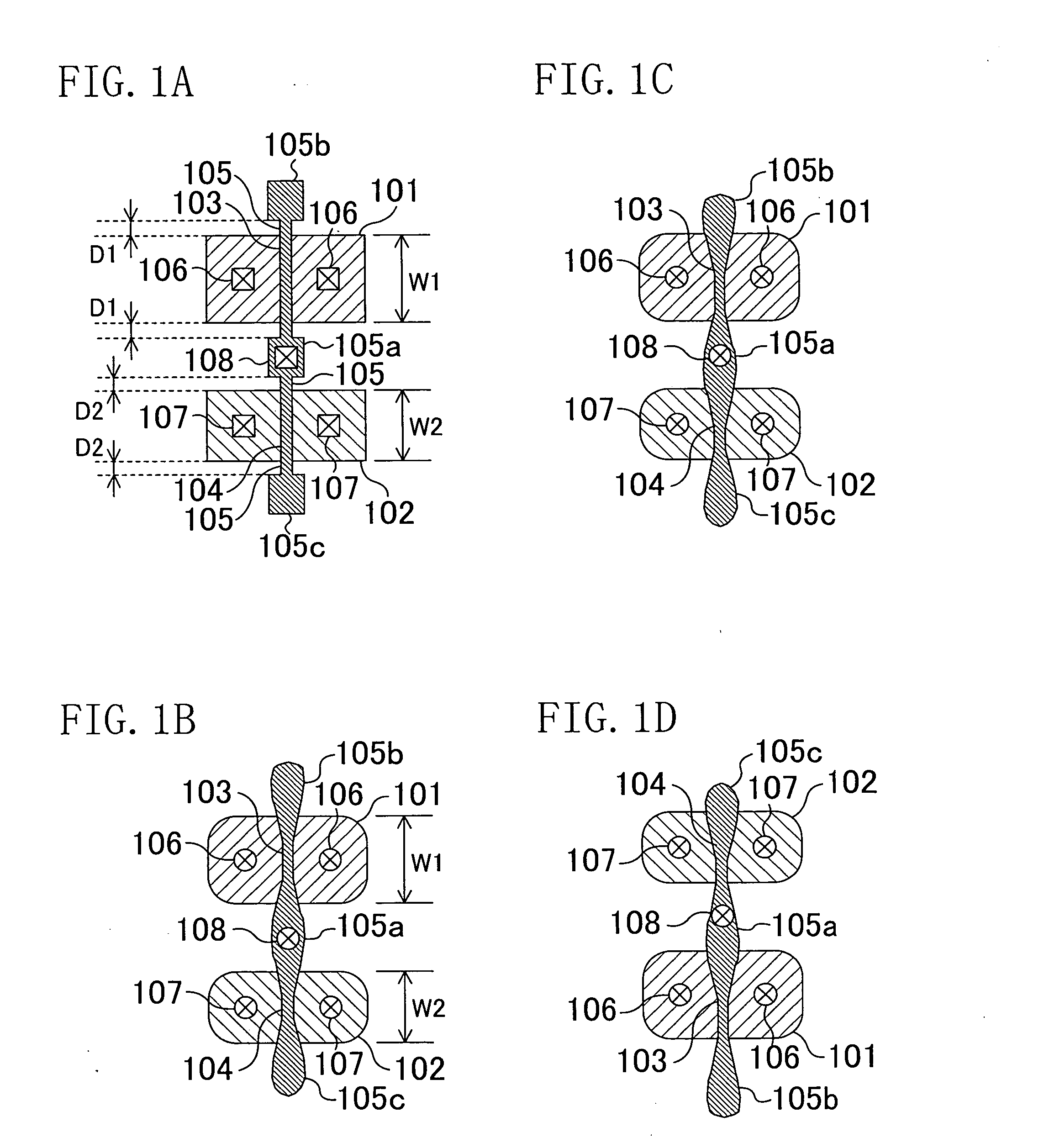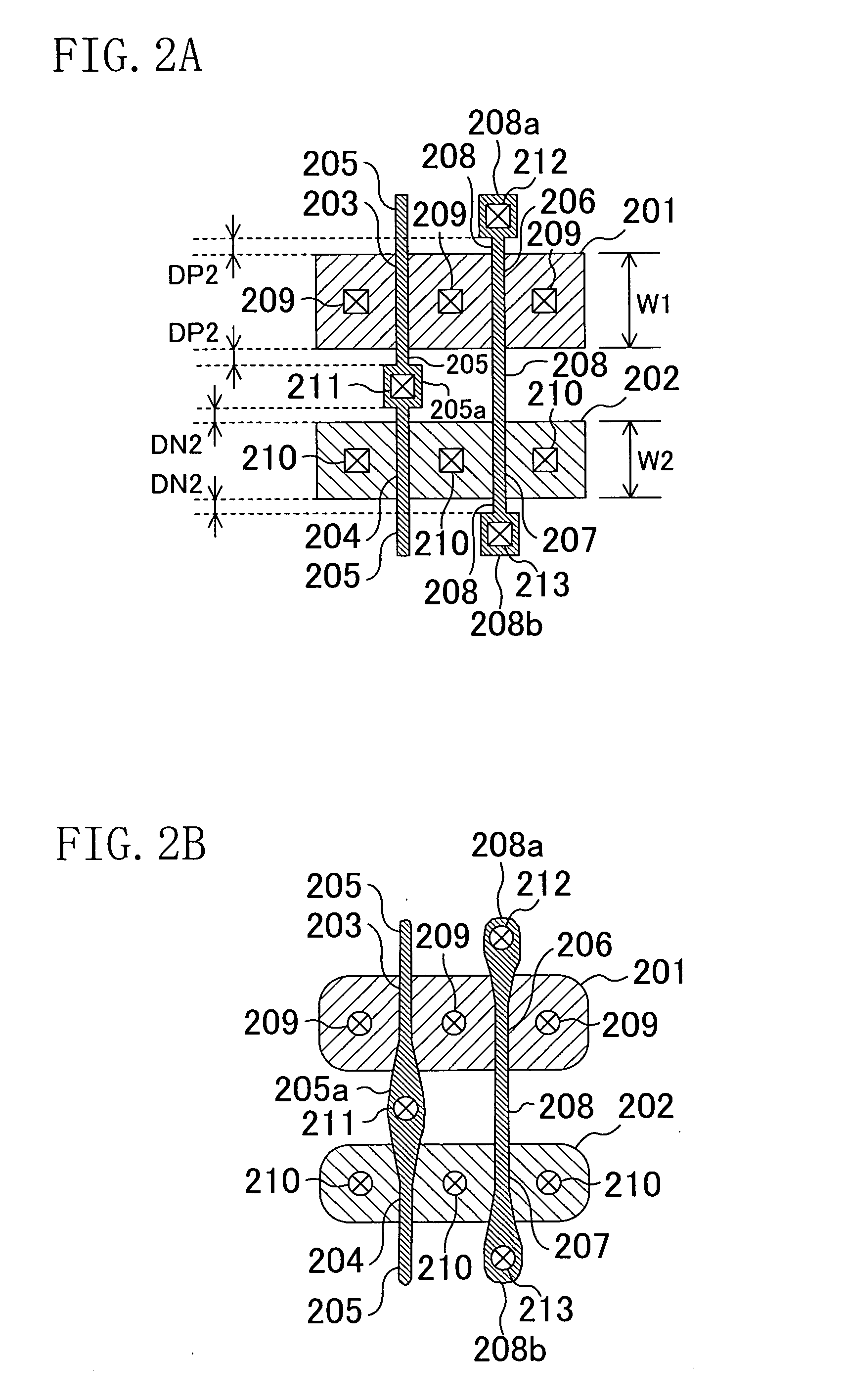Semiconductor device and layout design method for the same
- Summary
- Abstract
- Description
- Claims
- Application Information
AI Technical Summary
Benefits of technology
Problems solved by technology
Method used
Image
Examples
embodiment 1
[0031] Now, a semiconductor device according to Embodiment 1 and a layout design method for the same will be described with reference to the accompanying drawings.
[0032]FIG. 1A is a plan view of a design shape of the semiconductor device of Embodiment 1 and FIGS. 1B through 1D are plan views of fabricated shapes of the semiconductor device of Embodiment 1.
[0033] As shown in FIG. 1A, a P-type impurity diffusion region 101 and an N-type impurity diffusion region 102 each surrounded with an isolation region (not shown) of STI (shallow trench isolation) or the like are formed on a semiconductor substrate (not shown) to be adjacent to each other. A conductive pattern (of, for example, a gate polysilicon film) corresponding to a gate electrode 103 and a gate electrode 104 is formed on the P-type impurity diffusion region 101 and the N-type impurity diffusion region 102, and the conductive pattern extends over the isolation region disposed on the both sides of the impurity diffusion regi...
modification 1
of Embodiment 1
[0044] Now, a semiconductor device according to Modification 1 of Embodiment 1 and a layout design method for the same will be described with reference to the accompanying drawings.
[0045]FIG. 2A is a plan view of a design shape of the semiconductor device of Modification I of Embodiment 1 and FIG. 2B is a plan view of a fabricated shape of the semiconductor device of Modification 1 of Embodiment 1.
[0046] As shown in FIG. 2A, a P-type impurity diffusion region 201 and an N-type impurity diffusion region 202 each surrounded with an isolation region (not shown) of STI or the like are formed on a semiconductor substrate (not shown) to be adjacent to each other. A first conductive pattern (of, for example, a gate polysilicon film) corresponding to a gate electrode 203 and a gate electrode 204 and a second conductive pattern (of, for example, a gate polysilicon film) corresponding to a gate electrode 206 and a gate electrode 207 are formed on the P-type impurity diffusion...
modification 2
of Embodiment 2
[0100] Now, a semiconductor device according to Modification b 2 of Embodiment 2 and a layout design method for the same will be described with reference to the accompanying drawing.
[0101]FIG. 7 is a plan view of a shape of a pattern actually formed on a semiconductor substrate when the semiconductor device having the design shape of FIG. 5A is fabricated through given semiconductor device fabrication process. In FIG. 7, like reference numerals are used to refer to like elements used in the semiconductor device shown in FIG. 5A so as to omit the description.
[0102] Specifically, in this modification, at the stage of transistor design, the distance between the portion of the gate interconnect 503 having the larger dimension along the gate length direction than the gate electrode 502 and the impurity diffusion region 501 is set to be not larger than a value obtained by subtracting the maximum value Dma of the GA / OD photomask alignment shift from the thickness Dsw of th...
PUM
 Login to View More
Login to View More Abstract
Description
Claims
Application Information
 Login to View More
Login to View More - R&D
- Intellectual Property
- Life Sciences
- Materials
- Tech Scout
- Unparalleled Data Quality
- Higher Quality Content
- 60% Fewer Hallucinations
Browse by: Latest US Patents, China's latest patents, Technical Efficacy Thesaurus, Application Domain, Technology Topic, Popular Technical Reports.
© 2025 PatSnap. All rights reserved.Legal|Privacy policy|Modern Slavery Act Transparency Statement|Sitemap|About US| Contact US: help@patsnap.com



